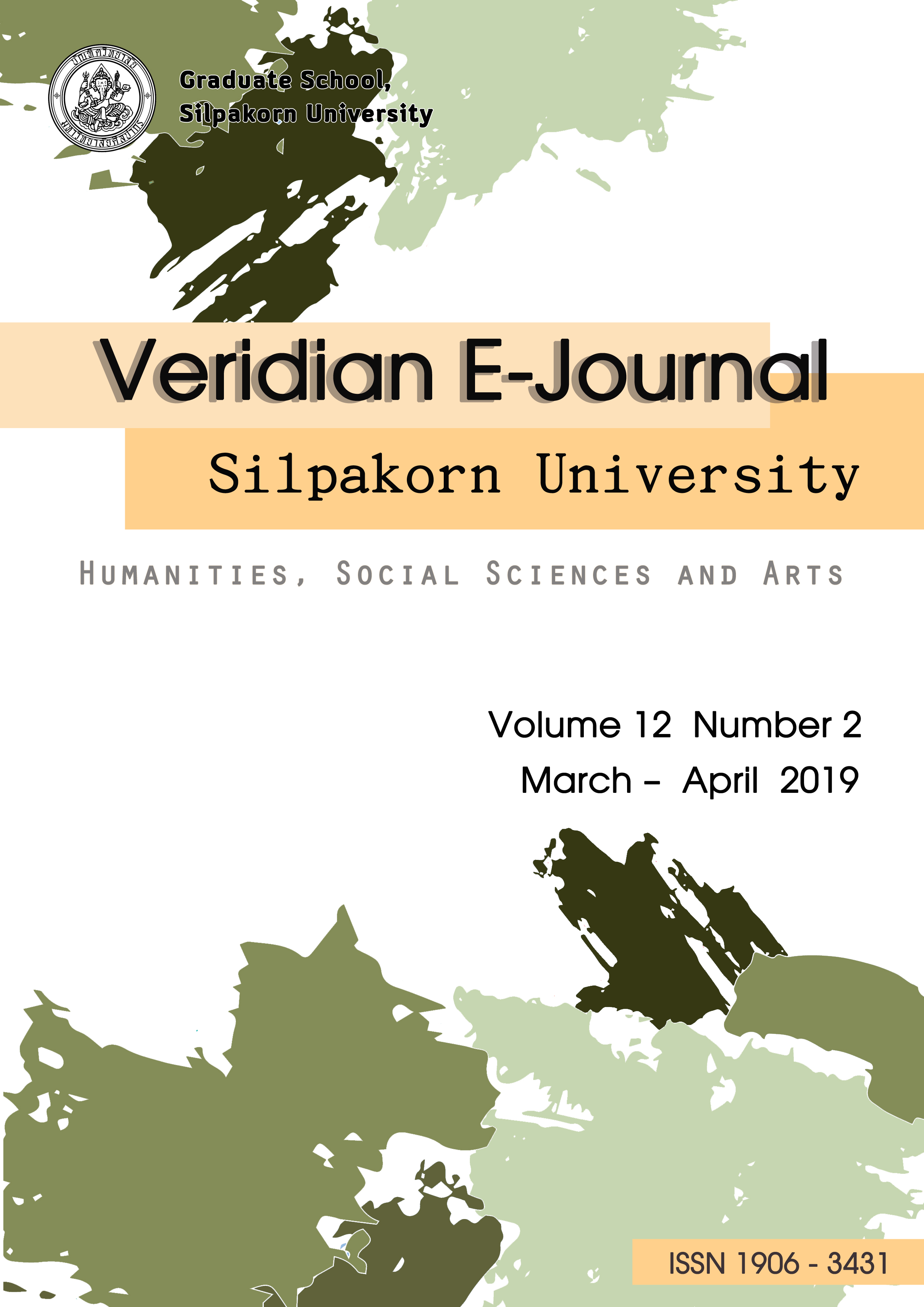แนวทางการนำกลิ่นมาใช้เพื่อส่งเสริมการเรียนรู้ในพิพิธภัณฑ์ : กรณีศึกษาพิพิธภัณฑ์ เอสโตเนียนเฮลธ์แคร์ ประเทศเอสโตเนีย และ พิพิธภัณฑ์เฮลซิงกิซีตี้ ประเทศฟินแลนด์ (How to use scents to support knowledge and learning in the museum: Case Studies of Estonian Health Care Museum in Estonia and Helsinki City Museum in Finland)
Main Article Content
Abstract
บทความนี้ผู้วิจัยนำเสนอแนวทางการนำกลิ่นมาใช้เพื่อส่งเสริมการเรียนรู้ในพิพิธภัณฑ์ซึ่งถือเป็นเรื่อง ใหม่ที่ยังมีผู้ศึกษาแนวทางการนำกลิ่นมาใช้เพื่อส่งเสริมการเรียนรู้ในพิพิธภัณฑ์น้อย แม้ว่าในปัจจุบันการนำกลิ่น มาใช้ในพิพิธภัณฑ์เริ่มเป็นที่นิยมกันอย่างกว้างขวางแต่ส่วนใหญ่กลิ่นถูกนำมาใช้เพื่อเสริมบรรยากาศมากกว่าการ ส่งเสริมการเรียนรู้โดยเฉพาะในประเทศไทย ผู้วิจัยจึงได้ทำการศึกษาโดยทำการสำรวจ สังเกตการณ์ วิเคราะห์ และสังเคราะห์การใช้กลิ่นในพิพิธภัณฑ์ต่างประเทศเป็นกรณีศึกษา เพื่อหาข้อสรุปแนวทางการนำกลิ่นมาใช้เพื่อ ส่งเสริมการเรียนรู้ในพิพิธภัณฑ์ได้อย่างมีประสิทธิภาพ บทความนี้ จึงเน้นประเด็นการวิเคราะห์พิพิธภัณฑ์ที่ต่าง ประเทศจำนวนสองแห่ง ซึ่งพิพิธภัณฑ์ทั้งสองแห่งนี้มีความโดดเด่นในเรื่องการสื่อสาร ถ่ายทอดความรู้ด้วย‘กลิ่น’ โดยพิพิธภัณฑ์เอสโตเนียนเฮลธ์แคร์ ประเทศเอสโตเนีย เน้นการสื่อสารความรู้ด้วยกลิ่นเพื่อส่งเสริมการเรียนรู้ ด้านการแพทย์และสุขศึกษา ในขณะที่พิพิธภัณฑ์เฮลซิงกิซีตี้ ประเทศฟินแลนด์ เน้นการสื่อสารความรู้ด้วยกลิ่น เพื่อส่งเสริมการเรียนรู้ด้านอัตลักษณ์ของประชาชนชาวเฮลซิงกิ กรณีศึกษานี้ ใช้การวิเคราะห์จากการตีความ องค์ประกอบด้านการสื่อสารด้วยทัศนศิลป์ผ่านแนวคิดสัญศาสตร์และองค์ประกอบแนวคิดด้านการตลาดที่ใช้ ประสาทสัมผัส (Sensory Marketing) องค์ประกอบทั้งสองนี้เป็นส่วนสำคัญในการทำความเข้าใจแนวทางการนำกลิ่นอันเป็นนามธรรมมาใช้ในการออกแบบให้เป็นรูปธรรมได้ชัดเจนขึ้น
This article aims to analyse the use of scents to support knowledge and learning in the museum. Particularly, I am interested in the use of 'scent' in the museum area. This is a new study that also can guide the way to use scents to support knowledge and learning in the museum. This article will show the result of my investigation survey, observation and analysis of how to use scents to support knowledge and learning in the museum effectually via case studies. This article focuses on the analysis of two international museums which both are clearly shown the way to communicate the knowledge through 'smell' in space. For instance, the Estonian Health Care Museum plays an important role in using scents to support knowledge and learning of medicine and healthcare for educations. While the Helsinki City Museum, Finland emphasises on the use of scents to support knowledge and learning of the Helsinki identity. However, both case studies will be interpreted by visual communication (through semiotics) and sensory marketing analysis. These two main elements are important to make us clearly understand the way of bringing the scent from tangibles becomes more concrete.
